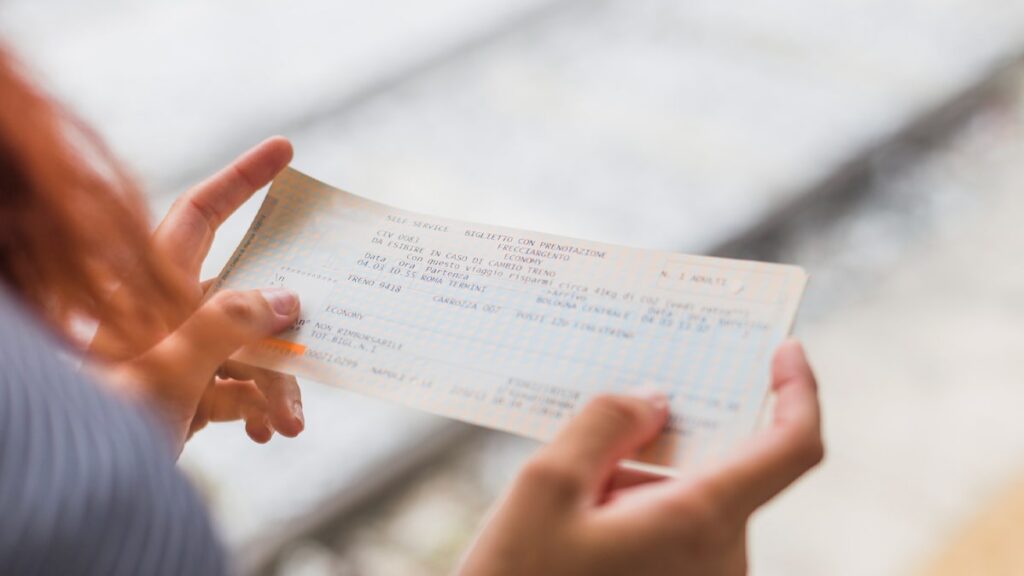A cheque is an important financial tool used by many people to transfer money. Historically, the exchange of physical checks involved complex logistics, delays, and manual processing.
However, since the inception of the Cheque Truncation System (CTS), it has seamlessly delivered the cheque.
The Cheque Truncation System stands as a testament offering a modern approach to cheque processing aligning seamlessly with the modern financial system.
In this article, we will discuss what a is Cheque Truncation System, the Benefits of using a Cheque Truncation System, and much more.

Table of Contents
What is a Cheque Truncation System?
The Cheque Truncation System (CTS) is a method of processing and clearing physical cheques in the banking system.
The traditional method involves the physical checking of paper cheques by the bank teller and inserting the cheque information into the system to make the fund transfer possible.
The conventional system had the potential for human errors, posing challenges for the banking system. Therefore, the Cheque Truncation System (CTS) was introduced to address these issues and enhance overall efficiency.
CTS allows for the electronic transmission of cheque images and relevant data throughout the entire clearing process.
With CTS, the physical movement of cheques is truncated at the collecting bank, and an electronic image of the cheque is transmitted to the paying bank and other necessary entities for clearance and settlement.
Benefits of Using a Cheque Truncation System
The following are the benefits of using the Cheque Truncation System-
- It eliminates the need for physical movement of cheques, leading to a quicker and more efficient clearing cycle
- The Cheque Truncation System minimizes the chances of manual errors, theft, or loss associated with the traditional paper-based cheque processing
- Electronic transmission of cheque images ensures a high level of accuracy in capturing and processing cheque details
- With almost automated processing of the cheques, the operational costs related to physical transportation, storage, and manual handling of paper cheques are reduced
- Any unauthorized transactions can be prevented by helping with fraud detection
- It enables real-time tracking and monitoring of cheque transactions, facilitating prompt intervention and issue resolution
- Simplifies and streamlines the entire cheque processing workflow, leading to enhanced productivity and resource utilization.
- The Cheque Truncation System integrates seamlessly into digital banking systems
How Does the Cheque Truncation System Work?
The following is the way the Cheque Truncation System works-
Cheque Deposit
The process begins when a customer deposits a physical cheque into their bank usually, there is a cheque deposit slip which you’ll have to fill with details like name, account number, Bank IFSC Code, etc.
Image Capture
The bank captures high-quality images of the front and back of the cheque using specialized scanner imaging devices. The images should display the cheque details, including the MICR (Magnetic Ink Character Recognition) code, amount, and signatures.
Data Entry and Validation
The captured images are subjected to data entry and validation to ensure accuracy. Any discrepancies or missing information are flagged for further review.
Truncation Point and Data Transmission
The point of truncation occurs at the bank where the cheque is deposited. At this stage, the physical cheque is no longer required for processing. The electronic images of the cheque, along with the associated data, are transmitted securely to the Clearing House or the paying bank through the clearing system’s network.
Clearing House Processing
The Clearing House receives the electronic images from various banks and facilitates the clearing process. The images are verified, and the data is processed to determine the net positions and settlement amounts between the participating banks.
Paying Bank Verifications
The paying bank receives the electronic image and verifies the authenticity of the cheque. This involves matching the details on the electronic image with the data in their records.
Funds Transfer
Once verification is successful, the paying bank electronically transfers funds to the account of the bank that deposited the cheque.
Customer Account Update
The customer’s account is updated in real time, reflecting the successful cheque deposit and clearance.
Returned Cheques Handling
If a cheque is dishonored or returned, the system generates electronic images of the dishonored cheque, and the relevant information is communicated to the depositor’s bank.
FAQ
Cheque Truncation System or CTS is a technology-driven process in banking that replaces the physical movement of cheques with the electronic transmission of cheque images and associated data for faster and more efficient processing.
Unlike traditional methods involving the physical movement of paper cheques, CTS eliminates the need for physical transportation, expediting the clearing process.
Yes, in India, the Cheque Truncation System is adopted by all the banks.
Yes, CTS significantly accelerates the clearing process, reducing the time it takes for cheques to clear and allowing for quicker access to funds.
Discrepancies or issues with the electronic image are flagged for review, and the clearing system typically has mechanisms in place for resolution.
Customers should ensure accuracy in writing cheques, including the amount in figures and words. Avoid alterations, use a secure writing pen, and double-check details to prevent errors or fraud.b
I’m Shiv Kumar, a graduate with a passion for finance, marketing, and technology. My journey into finance started with a desire to understand money management and investing.
Our main goal is to empower individuals through financial education. We believe that everyone should have the opportunity to build a strong financial foundation. Whether you’re a seasoned investor or just getting started, we provide articles, guides, and resources to help you navigate the financial landscape.
I invite you to join our community of financially savvy individuals. Feel free to ask questions, engage with our content, and explore the topics that matter to you. Together, let’s take control of our financial futures.




